EXPLANATOR is a software for GDW’s SF-RPG Traveller, especially for campaigns that play in the 3rd IMPERIUM. It is the perfect companion to travellermap.com. It uses a database of 15.000+ world’s, combines it with a search engine and generates 6-7 pages of text with information about each world.
DOWNLOAD the LATEST VERSION of EXPLANATOR : Explanator NSF 17
DOWNLOAD the Linux Version (thanks to Dalton Calford) : LinuxExplanator
DOWNLOAD a world, generated with EXPLANATOR : 2124 Lunion A995984-D
Update 2023.10.18
Not exactly an Update, more a reminiscence.
I started coding Traveller utilities in the summer of 1983, and Explanator was conceived in 1986, when I held my copy of Digest Groups Grand Survey in my hands. Grand Survey and Grand Census, and later World Builders Handbook still build the core of the program. At first I wrote in German (you will still find a few remnants in the code) and later switched to English, in case anyone who did not speak German would ever use it. That was long before the Internet, just in case.
In the late 80s my 16K MZ80K was definitely starting to chafe under the amount of data, so the program languished for some time.
In 1990, thanks to Wing Commander, I switched to MS-DOS and a PC and QBasic. I had worked on an ATARI ST with its superior Omicron BASIC for some years and QBasic was a massive step down, but I still used it, knowing that the ST was going the way of the Emu and the wooly mammoth.
For a few years this went quit well, until the 128K memory of QBasic stopped any further development. While I still added elements from new Traveller editions, the program was basically stalled.
This all changed dramatically with QB64, a fan made version that was nearly 100% compatible to the old code, and had absolutely no memory limitation. To that came Facebook and the ability to share my code.
That was 10 years ago, and with the advent of Travellermap.com the database that I had always wished for was finally available.
The result you see today has gone through nearly 40 years of development, changes when new rules came out, and thanks to very motivating 1000s of downloads to the all-encompassing form it has reached today.
Update 2023.03.15
Its been three years but here, finally, is a new update. There is a load of bug fixes and corrections (which, of course, don’t show) and a new installment, the trade rules from MgT2E. This should make it easy for referees, since you can hand the prepared lists to your players and do not have to work through the tables in the rule book. The prices in the list are based on average roll of 10 on 3D, if you use the tables in game add the modifier (+X) to your die roll on the “Modified Price” table.
Update 2020.01.07
Time for a new Explanator Update.
A few versions ago, I added the insystem traffic to the project. Now I have taken the next step, to generate which ships are actually docked at the orbital port or berthed downbelow, so that you can offer the full monty to your players.
This comes with a slight problem. I am using the BTN/WTN system from GURPS Far Trader, which is by far the best trade system of all the many Traveller variants in existence. It is based on actual world trade as it is taught in business courses. Its realistic. But the referee pays a price for this realism, a price of numbers. If you take the Solomani Rim, especially the Vega Sector, you will find worlds were 10.000 ships are in the system, where a steady flow of traffic is on its way to and from the jump point. While the numbers are impressive and the tonnage of some of the freighters even more (I am talking of hundreds of 100.000t mega freighters), the players small Scout, or Free Trader becomes a miniscule part of the systems traffic. If this seems a bit too much, I have added a new feature, an adjustable scaler, where you can enter any % value that seems better for your kind of game.
To manage this. Explanator now comes with an external file, called Explanator.DAT that contains variables. You can now choose freely which measurement system for temperature you want to use. It also contains the option to use sector data from the CEPHEUS rules, in this special case its the Universe of “These Stars Are Ours” from Stellagama. And as already explained a value to adjust the number of ships in game.
Temperature Celsius or Fahrenheit,C
Use “This Stars are Ours” Verse ,N
Number of ships in Game % ,100
Just open the file, change what you like, C and F, Y or N and any Percentage you prefer.
Update 2019.06.16
Blast from the Past (Version from 1999), only Spinward Marches
Download : Marches
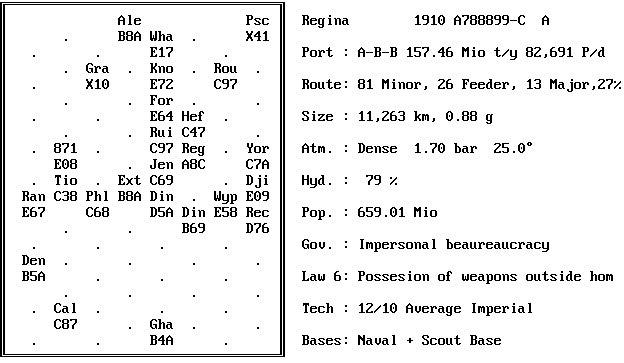
Update 2019.06.06
Added a new sector, Tuglikki (that’s the Vargr sector coreward of the Marches), and deleted the new font since it seemed to generate only problems.
Update 2019.06.04
Added SDB’s based on world population and the amounts given in Fifth frontier war. It’s a bit of a problem, since 5FW was published before the population multiplier was added. So the real numbers would be up to 9 times as high as in the game. As a workaround I assumed the game value for a POP multiplier of 5, so systems have either a higher or a lower value than in the game.
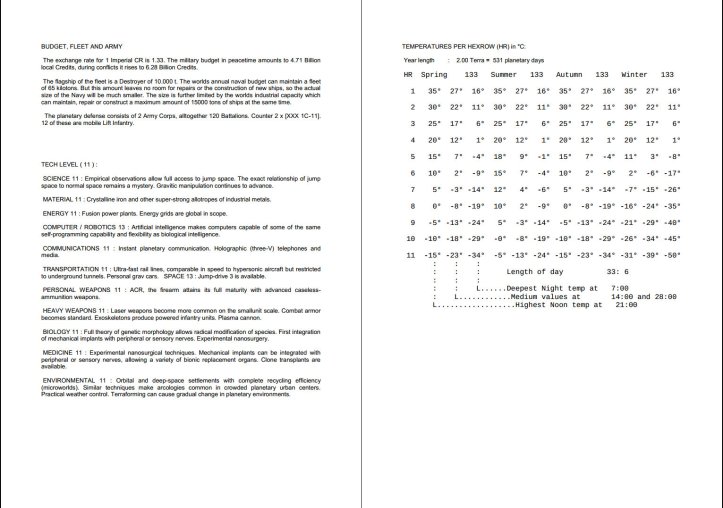
UPDATE 2019.06.01
Another update for Explanator. While I had included budget calculations years ago, they disappeared as a factor and were only present in the fleet size.
Now there is a new paragraph called BUDGET, NAVY AND ARMY that contains all possible values from TCS (Trillion credit Squadron), including yard capacity (not only possible ship size but total capacity). In addition I included the calculation of Battalions from JTAS 10, now also defining the strength of the ground forces, including counter data for 5th Frontier War e.g. 6 x [XXX 1C-5].
As a side effect I also found a way to calculate the financing of the imperial Navy. There is always a huge difference between the worlds naval budget and the actual capacity of the industry to build and service ships. If you take this amount for the upkeep of the Navy it works nicely.
I also cleared up the control scheme between Starport and jump-point, based on port size and law level of the world.
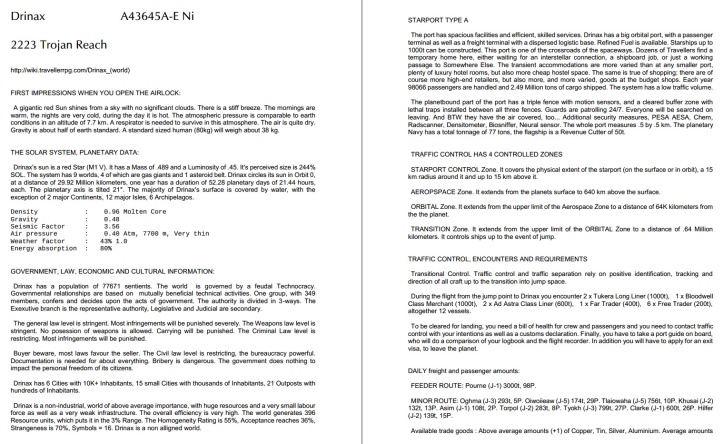
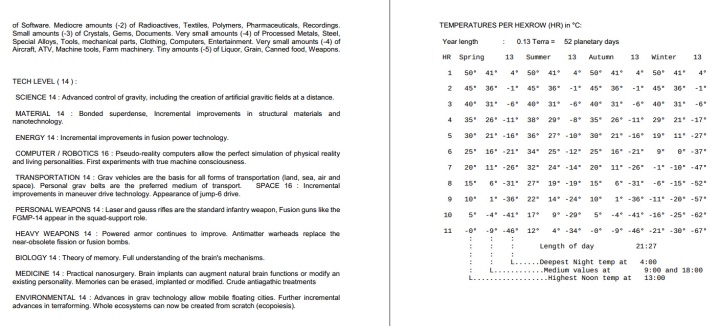
Update: Added political allegiance and a hyperlink to the world entry in http://wiki.travellerrpg.com
Well, after a long hiatus I decided to work on Explanator again, since the last version was called FINAL this one is called NSF (Never Say Final) 🙂
There was still one important part missing, the detailed law level. I used DGs World Builders Manual and added 6 legal categories. The descriptive texts are my personal interpretations of these levels.
The first part is the general description of the law level, followed by the already known weapon law and the new criminal law. The next paragraph contains Trade law, civil law (bureaucracy) and the personal freedom enjoyed by each individuum.
Here are three examples for the low, medium and high ends of the legal scale:
Efate A646930-D Hi In An 1705 Spinward Marches
No laws at all, there is an effective state of anarchy. The Weapons law level is actually non existing, there are no prohibitions on ownership and carrying. There is no criminal Law. Everyone has to take care of himself.
Buyer beware, most laws favour the seller. The Civil law level is very low. A well placed bribe can be helpful. Beyond emergencies, the personal freedom is unrestricted.
Mid range:
Aramanx B657974-7 Hi Ga Pz 3005 Spinward Marches
The general law level is low. Most infringements will not be be punished. The Weapons law level is moderate. Allowed are Pistols, open carrying. Most crimes will be prosecuted.
You need a permit if you want to buy or sell, as well as a license from the government to trade at all. The Civil law level is average. Documentation is needed for most transactions, Bribery is risky. Personal freedom is generally not restricted.
And on the other end of the spectrum:
Pysadi C5766D8-5 Ag Ni Da 3008 Spinward Marches
The general law level is restricting. Infringements will generally be punished. The Weapons law level is very restricting. Posession of weapons outside home is prohibited. Carrying will be punished. The Criminal law level is extreme. Even the smallest infringements will be punished severely.
You need triplicate permits for each type of good you want to buy or sell, as well as a license from the government to trade at all. The Civil law level is extreme. The bureaucracy is overwhelming. Triplicate documentation is needed for everything. Bribery is a capital crime. There is almost no personal freedom, the state controls most interactions.
There is a LOT of adventure potential in these factors because it gives you guidelines how it feels to actually interact with the people of this world.
In addition I tinkered a bit with the tech level.
If the world is neither a RED zone, nor has a Starport type X, the SCIENCE TL is at least 9, symbolising the ease of obtaining knowledge in a Universe full of traders carrying cheap electronic gadgets. The second change is in communication, even a low tech society can afford mobile phones for daily communication, but they are limited in range because of the lack of satellite networks.
INFO 1: Explanator randomizes and uses all the formulae used in world generation, so if you don’t like some details, run the world again and again (rename the old file or it will be overwritten) and combine the parts you like.
INFO 2: The text is preformatted, so if you like justification, just reformat it. You can use any font you like, but the temperature table will only work with Monospace fonts, like Courier New or Consolas.
Over 35 years ago, there was an article in Journal No. 10, called “A referee’s guide to planet building” by the fabulous, furry, Keith Brothers, which impressed me immensely. In those days, when having a computer, was nothing ordinary, I was the proud owner of a SHARP MZ-80K with dual floppy discs and a 7-dot matrix printer. An amazing 48K of memory was at my disposal, with 16K left after the BASIC language was loaded.
This article impressed me so much, that I started to write a program that should do what the article did.
Many, many years, many operating systems, and many versions later, I am still working on that software that does what the Keith Brothers did in that article. There is software available on the net that is very good in translating those dreary UPP numbers into long tables, but I never found something that “explained” a world. So I had to write it myself.
This software tells a story about the world you are on.
It starts with a description of your first impression of the planet once you open the airlock. Basically the software calculates an orbit around the sun that gives the world a temperature that will make it hospitable for humans. Then it generates the conditions the player will see and feel when they open the airlock (assumption is for hexrow 4). In this case the world is Craw, Spinward Marches, Glisten Subsector. The first paragraph is what you see and feel when you leave the ship. It is meant for the players, so they get an impression that they are not in Kansas anymore.
Craw C573645-5 Ni (Crawni) Asla8
1939 Spinward Marches
FIRST IMPRESSIONS WHEN YOU OPEN THE AIRLOCK:
A small yellow Sun shines from a nearly cloudless sky. There is a gentle breeze. The mornings are cold, the nights are very cold, during the day it is chilly. The atmospheric pressure is comparable to earth conditions in an altitude of 1.1 km. The atmosphere contains highly contagious components. The air is quite dry. Gravity is about half of earth standard. A standard sized human (80kg) will weigh about 50 kg.
This is followed by a description of the sun and the solar system, the composition of the planet’s surface, as well as the physical data.
THE SOLAR SYSTEM, PLANETARY DATA:
Craw’s sun is a Yellow Star (G7 V). It has a Mass of .894 and a Luminosity of .864. It’s perceived size is 55% SOL. The system has 11 worlds, 3 of which are gas giants and 2 asteroid belts. Craw circles its sun in Orbit 3.5, at a distance of 239.36 Million kilometers, one year has a duration of 708.85 planetary days of 26.47 hours, each. The planetary axis is tilted 33°. The majority of Craw’s surface is covered by land, with the exception of 3 major Oceans, 8 minor Oceans, 6 small Seas, 6 scattered Lakes.
Density : 1.00 Molten Core
Gravity : 0.63
Seismic Factor : 3.82
Air pressure : 0.93 Atm, 1199 m, Disease
Weather factor : 36% 0.0
Energy absorption : 86%
Native life : 6
This is followed by information about the government and settlements.
GOVERNMENT, ECONOMIC AND CULTURAL INFORMATION:
Craw has a population of 9.304 Million sentients. The world’s government is a representative Democracy. The world is governed by elected politicians. One to three powerful individuals control the functions of the government. The authority is undivided.
Craw has 80 large Cities with 100K+ Inhabitants, 115 Cities with 10K+ Inhabitants, 138 small Cities with thousands of Inhabitants, 156 Outposts with hundreds of Inhabitants.
Next comes an evaluation of the trade codes and the new T5 variables.
Craw is a non-industrial, very unimportant world, with average resources and a small labour force as well as a non-existent infrastructure. The overall efficiency is mediocre. The world generates 80 Resource units, which puts it in the 1% Range. The Homogeneity Rating is 45%, Acceptance reaches 29%, Strangeness is 30%, Symbols = 3.
Next part is the Starport. The software checks all worlds in a Jump-6 radius, if there is any traffic to that world, and how many daily tons of cargo and how many passengers will leave to that world. The traffic calculations are based on the GURPS Far Trader WTN/BTN formulae. It also tells you the exact amount and type of ships you are going to meet on your way from Starport to jump point and vice versa.
STARPORT TYPE C
The port facilities are about average for its class. Craw has an orbital station, with a passenger and a freight terminal. The port has 40 landing pads, most of them equipped with a proper berth and one runway. Its traffic control can handle multiple takeoffs and landings at once. Unrefined fuel and all conventional ship’s stores are available, refined fuel is also offerd, but tankage is limited. All minor repairs and maintenance of ships up to 600t can be performed without undue delays. Handling of ordinary container cargo is efficient, though goods requiring very special handling will slow the routine. Modest but adequate shopping and restaurants, and usually some kind of entertainment, will be available for passengers and crews. Each year 18.098 passengers are handled and 308.633 tons of cargo shipped. The system has a low traffic volume.
The planetbound part of the port has an Anti-intrusion fence and a cleared buffer zone with patrolling guards, the patrols check it hourly. The whole port measures .5 by .5 km. The planetary Navy has a total tonnage of 4 kilotons, the flagship is a SDB of 600 t.
TRAFFIC CONTROL HAS 2 CONTROLLED ZONES
STARPORT CONTROL Zone. It covers the physical extent of the starport (on the surface or in orbit), a 15 km radius around it and up to 15 km above it.
AEROPSPACE Zone. It extends from the planets surface to 800 km above the surface.
TRAFFIC CONTROL, ENCOUNTERS AND REQUIREMENTS
Approach/Departure Control. Provides traffic control and separation that relies on craft adhering to published procedures within the planets AEROSPACE Zone. Also provides weather advisories and separation along flight path.
During the flight from the jump point to Craw you encounter 2 x Free Trader (200t), altogether 2 vessels.
To be cleared for landing, you need a bill of health for crew and passengers and you need to contact traffic control with your intentions as well as a customs declaration, also Landing and departure clearances, flight plan approval and a portside manifest or physical spot inspections.
The next part concerns the available trade goods, again in a descriptive format.
DAILY freight and passenger amounts:
MINOR ROUTE: New Rome (J-1) 273t, 4P. Aki (J-4) 174t, 12P. Glisten (J-3) 111t, 27P.
Available trade goods : Tiny amounts (-5) of Liquor, Grain, Canned food. Negligible amounts (-7) of Wood, Meat, Spices, Fruit.
Next to last follows an evaluation of the tech level, namely which technologies you can expect to find, as well as which weapons are allowed under the world’s law level.
TECH LEVEL ( 5) AND WEAPON LAWS ( 5):
SCIENCE 5 : The first synthesis of celestial and local laws of motion, usually along the lines of Newtonian mechanics. Engineering begins to rely on rigorous mathematics and empirical investigation of materials.
MATERIAL 5 : Large-scale production of hard steels, allowing their use as structural members.
ENERGY 5 : Steam engines, followed by the exploitation of wood and coal for fuel. Electrical energy appears late in the period, transmitted through local power grids and stored using simple chemical batteries.
COMPUTER / ROBOTICS 6 : Massive electrical calculating devices for specialized applications.
COMMUNICATIONS 5 : Longdistance communications via electric signals (telegraph and voice telephone).
TRANSPORTATION 6 : Fast railways and electric trains. Personal automobiles. WATER 6 : AIR 5 : Hot-air balloons and experimental propeller aircraft. SPACE 11 : Fusion rockets become practical, although the new reactionless drives are much faster and more efficient. Starships can be equipped with Jump-2 drives.
PERSONAL WEAPONS 6 : Auto rifles, Missiles, Light machine guns, Missile launchers are in personal use. Moderate Law. Allowed are Automatic weapons, Pistols, open carrying.
HEAVY WEAPONS 6 : Advanced indirect-fire techniques. Self-propelled guns (tanks). Large air-dropped explosives, including (late in the period) fission bombs.
BIOLOGY 5 : Theories of heredity and evolution put biology on a rigorous footing. Early cell biology. Germ theory of infectious disease.
MEDICINE 5 : Experimental vaccination techniques. Reliable anesthetics and antiseptics make radical surgery practical for the first time.
ENVIRONMENTAL 5 : Improved sanitation allows very large cities (PR 6).
The final part describes the temperature ranges in differing geographical altitudes, also known as hexrows.
STARTING THE SOFTWARE
When you start the Explanator.exe you can either enter enter the name of a world or start the search engine. There is no need to enter the full name or use capitalization. The software will show you all worlds that start with the characters you entered. After the list is finished, you have to enter the numbers for the world of your choice.
If you do not enter a name the software will start the search engine. You can define all the planetary characteristics with an upper and a lower limit. As result you will get a list of eligible worlds, this list will also be written to the directory. The file name is Worldlist.txt
Before the world is displayed you have the choice to enter values like temperature, axial tilt, length of day and gravity. The file will be saved in RTF format, in the Explanator directory. After that the program will restart automatically.
For those of you who prefer Fahrenheit to Celsius:







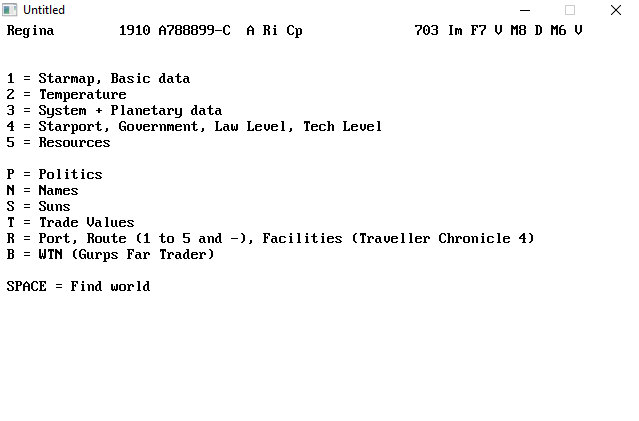
I think I’ve found a bug. I tried to input the name, Pa’an. It’s in the Trojan Reach. I typed in Pa’an and nothing generated. It just went back to the input screen. I tried Paan, Pa an, and nothing. So I tried Pa. Pa’an did not show up at all. I checked the Trojan Reach file and Pa’an is listed. So, I must assume the program has a problem with the ‘. I’ll check back here for any reply. Thank you.
LikeLike
https://www.mediafire.com/file/21brg8gy9zjcgul/Explanator_NSF_17.zip/file?fbclid=IwAR36ZJD6asxsVB5sx8PQixG33DRk1YE-dRLcFHfCNrv0oGsz89NCkXTlh28
LikeLike
The download link isn’t working.
LikeLike
This thing kicks ass. Thanks for sharing.
LikeLike
I uploaded a new version, it’s working now!
LikeLike
The download link isn’t working.
LikeLike